Greece workshop – 31 March – 1 April 2025
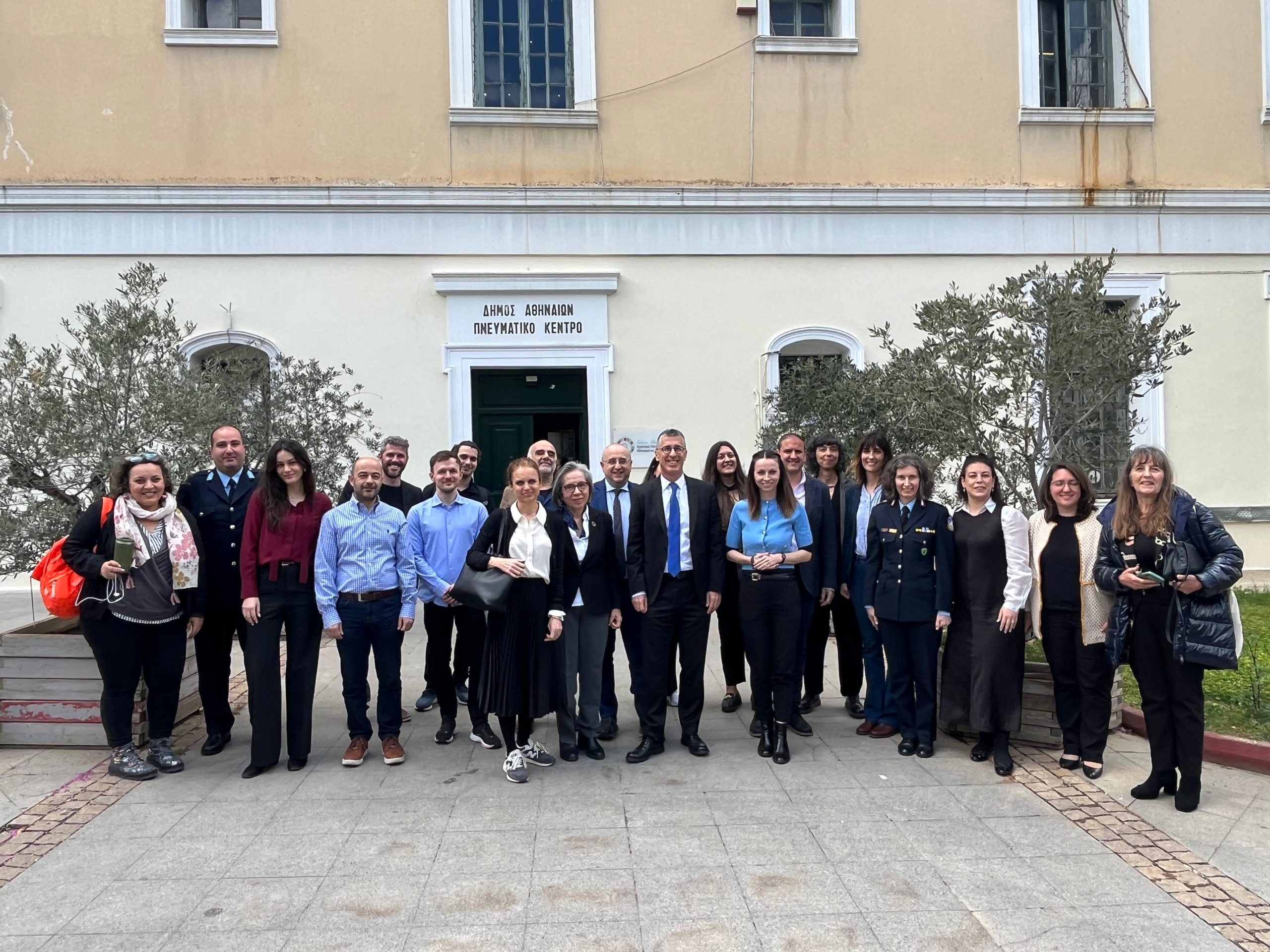
The fifth workshop of the EU Road Safety Exchange (EURSE) project’s second phase took place in Athens, Greece, on 31 March and 1 April 2025, and focused on improving urban safety and the safety of motorcyclists and moped riders.
The event was co-organised with the Ministry of Infrastructure and Transport and supported by the City of Athens. Partners from the Directorate General for Traffic (DGT) in Spain and the Danish Road Safety Council joined the EURSE workshop, which follows two previous study visits in the respective countries.
The first day of the workshop was held at the Municipality of Athens Cultural Centre and started with welcoming words from the Head of the Road Traffic & Safety Directorate, Manos Parisis, Deputy Mayor of Athens Maro Evangelidou, and Antonio Avenoso from the European Transport Safety Council (ETSC).
Participants included various stakeholders, from both national and local authorities, as well as the civil society, including the Ministry of Infrastructure and Transport, Municipality of Athens, Ministry of Citizen Protection, RSI Panos Mylonas and NTUA National Technical University of Athens.
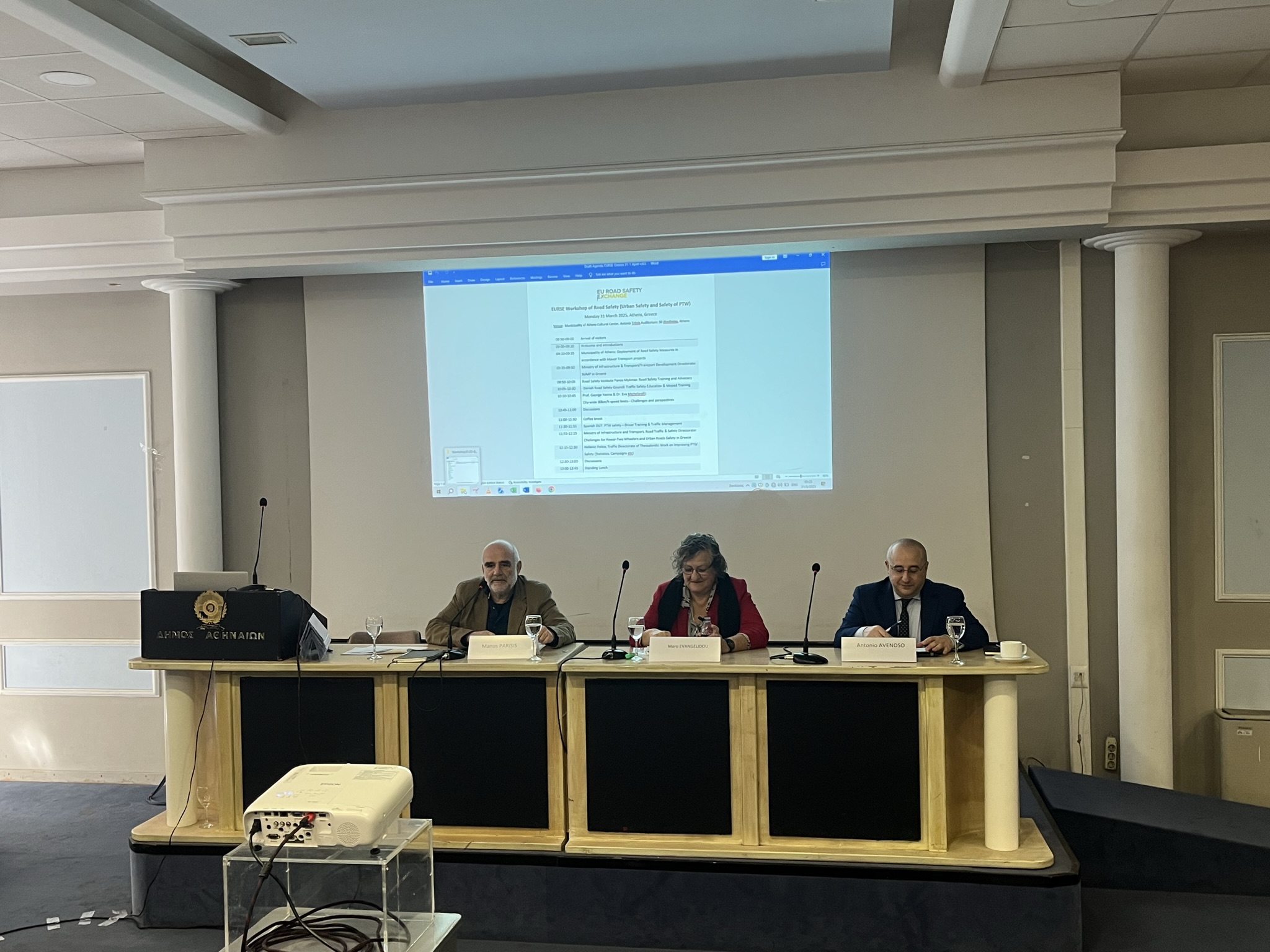
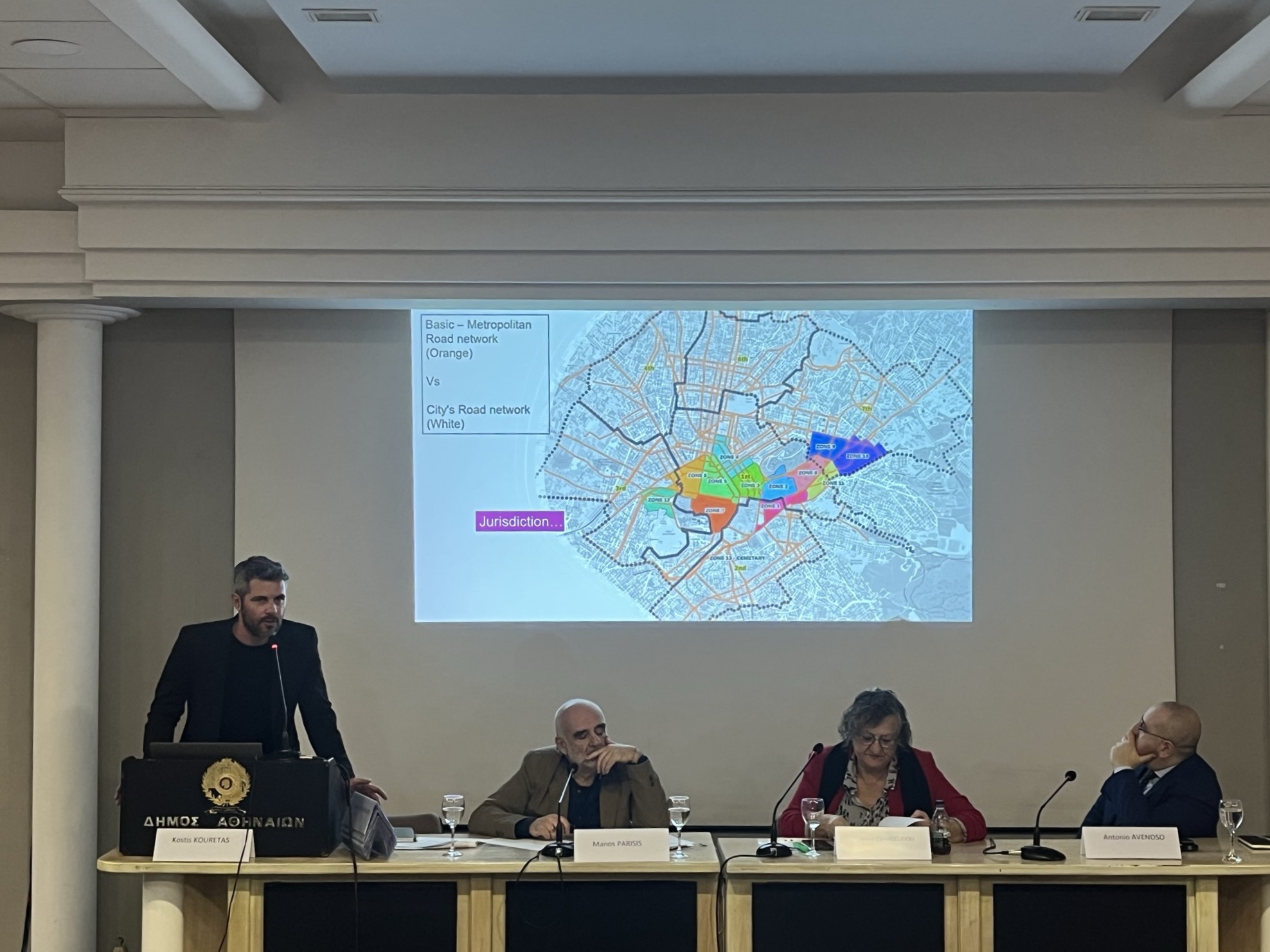
The focus of the morning programme was on urban road safety measures, with Konstantinos Kouretas, Advisor of Transportation Policy at the Municipality of Athens, presenting some of the key mobility developments in the city.
Ongoing priorities involve the redesign of roads and the expansion of the public transport network. Athens’ concept of a 15-minute city was presented, highlighting the importance of making commuting and mobility safer within 15 minutes of quality transport. The urban accessibility plan of Athens was also discussed, sharing the focus on the improving the traffic experience for the more vulnerable users.
Continuing on the subject of urban road safety, Evangelia Stavropoulou, Deputy Head of Transport Development Directorate in the Ministry, presented the development and implementation of Sustainable Urban Mobility Plans (SUMPs) in Greece, including the legal background and areas of focus.
Greece has also established the E-SUMP platform, which allows municipalities to share good practices while enabling a more efficient way to assess the implementation of SUMPs across the country.
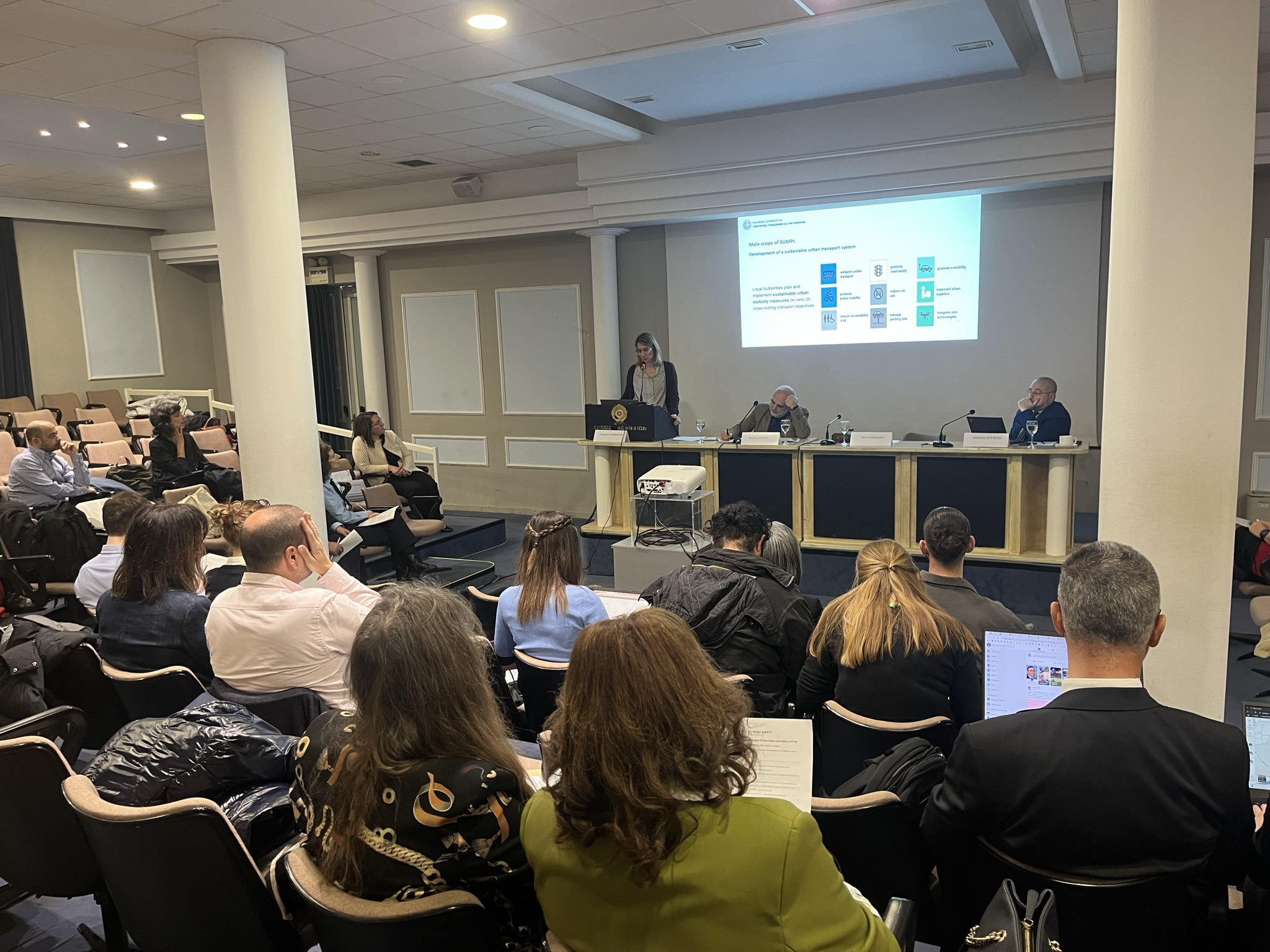
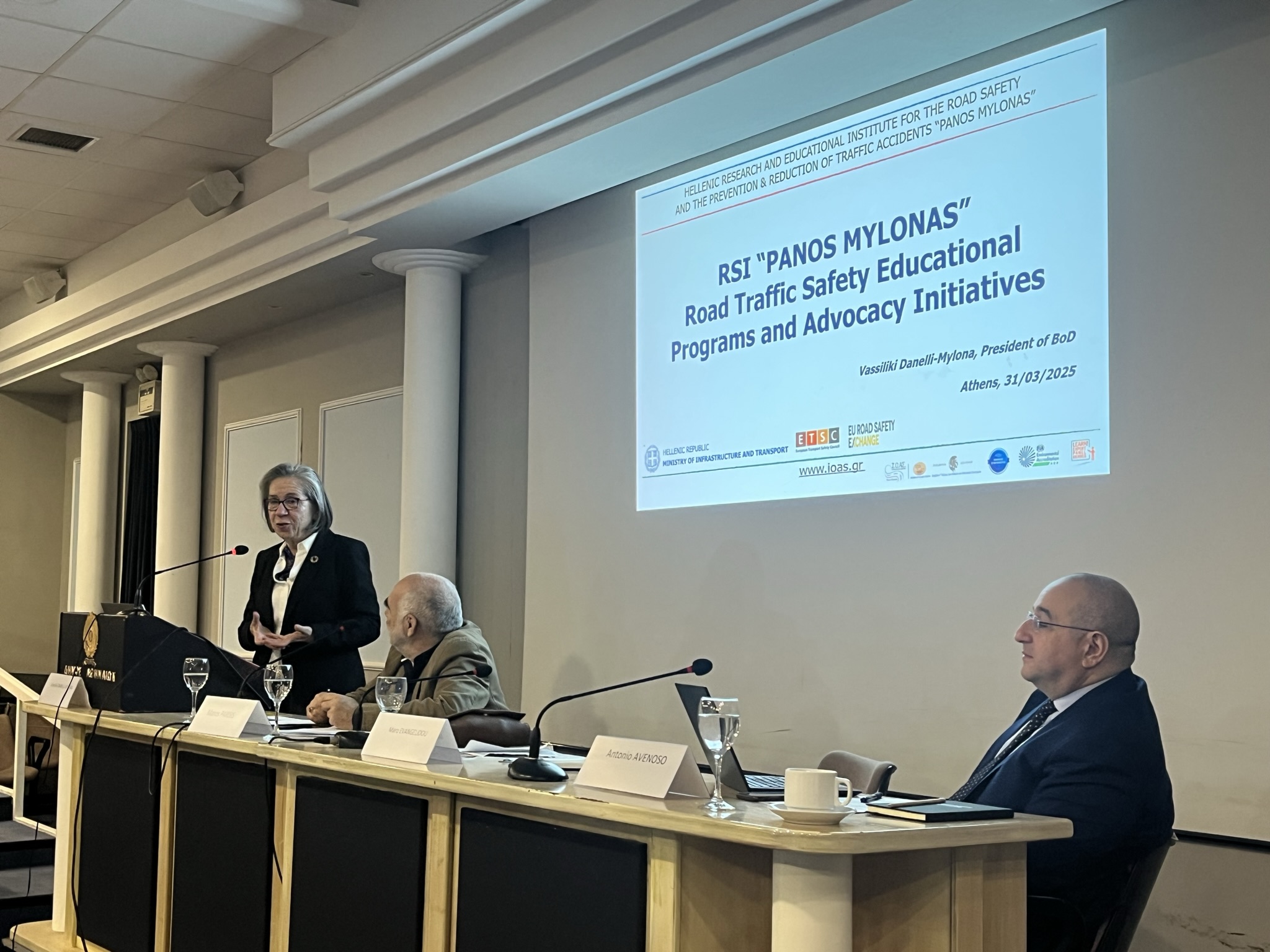
Road safety education and training were also discussed, with Vasiliki Danelli Milona, President of the Road Safety Institute Panos Mylonas, outlining various road safety education and training programmes develeloped by the organisation and supported by the authorities, as well as the some of the policy work.
The institute works with young people across different age groups, tackling topics such as micromobility, helmet use, and safe behaviour in traffic, with the goal of promoting and developing a traffic safety culture in Greece.
This was followed by contributions from the Danish partners, building on the work initiated during the study visit to Copenhagen in May 2024. Lise Heiner Schmidt presented the Danish traffic safety education framework, explaining the legislative background and the various responsibilities.
Lise presented the ‘Municipalities´ School Traffic Test”, a project initiated by the Danish Road Safety Council to ensure that all schools teach traffic safety education to their pupils. She emphasised the need for effective evaluation of traffic safety education in schools and ensuring that every child has an equal opportunity to develop safe behaviour in traffic.
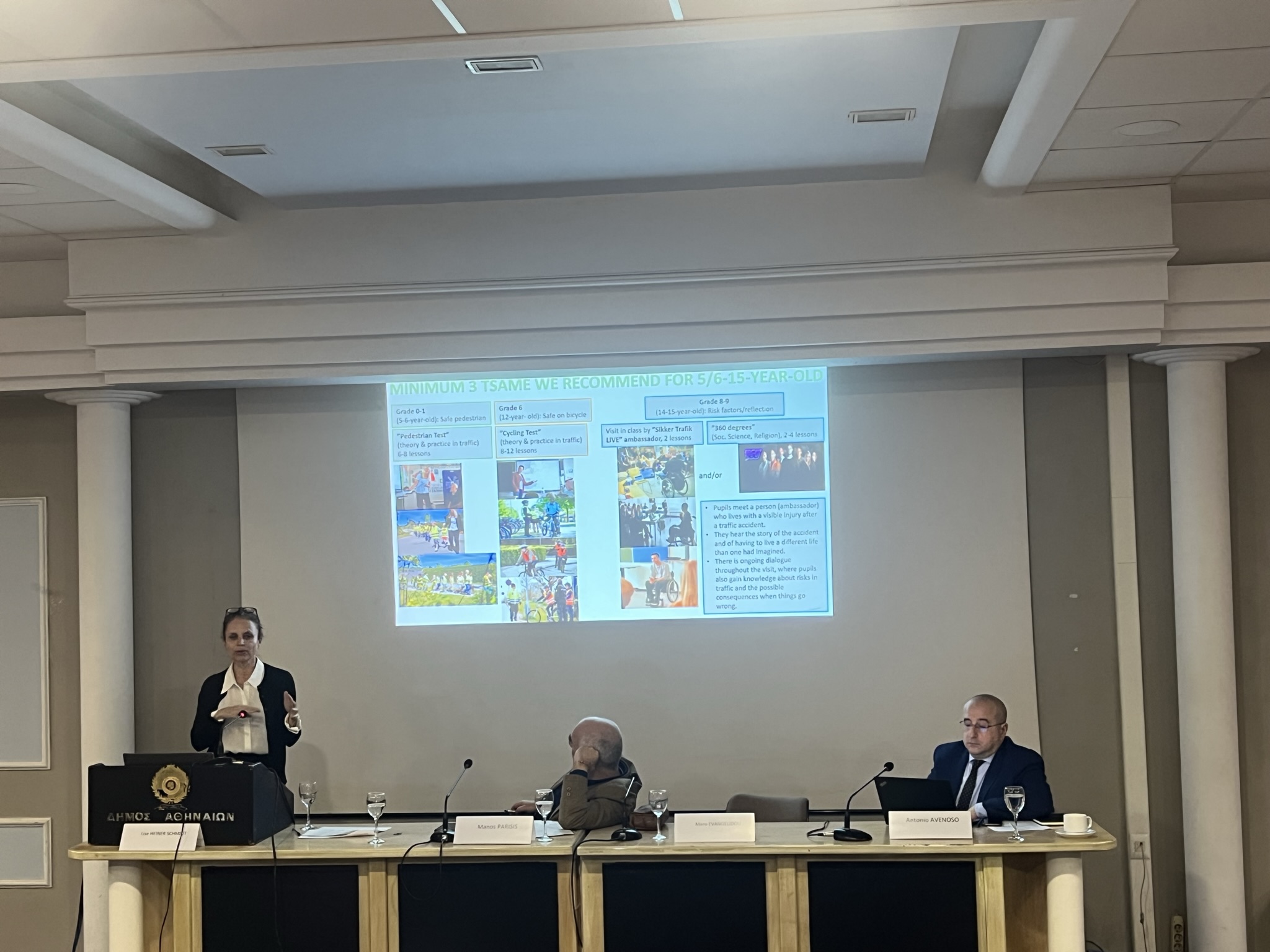
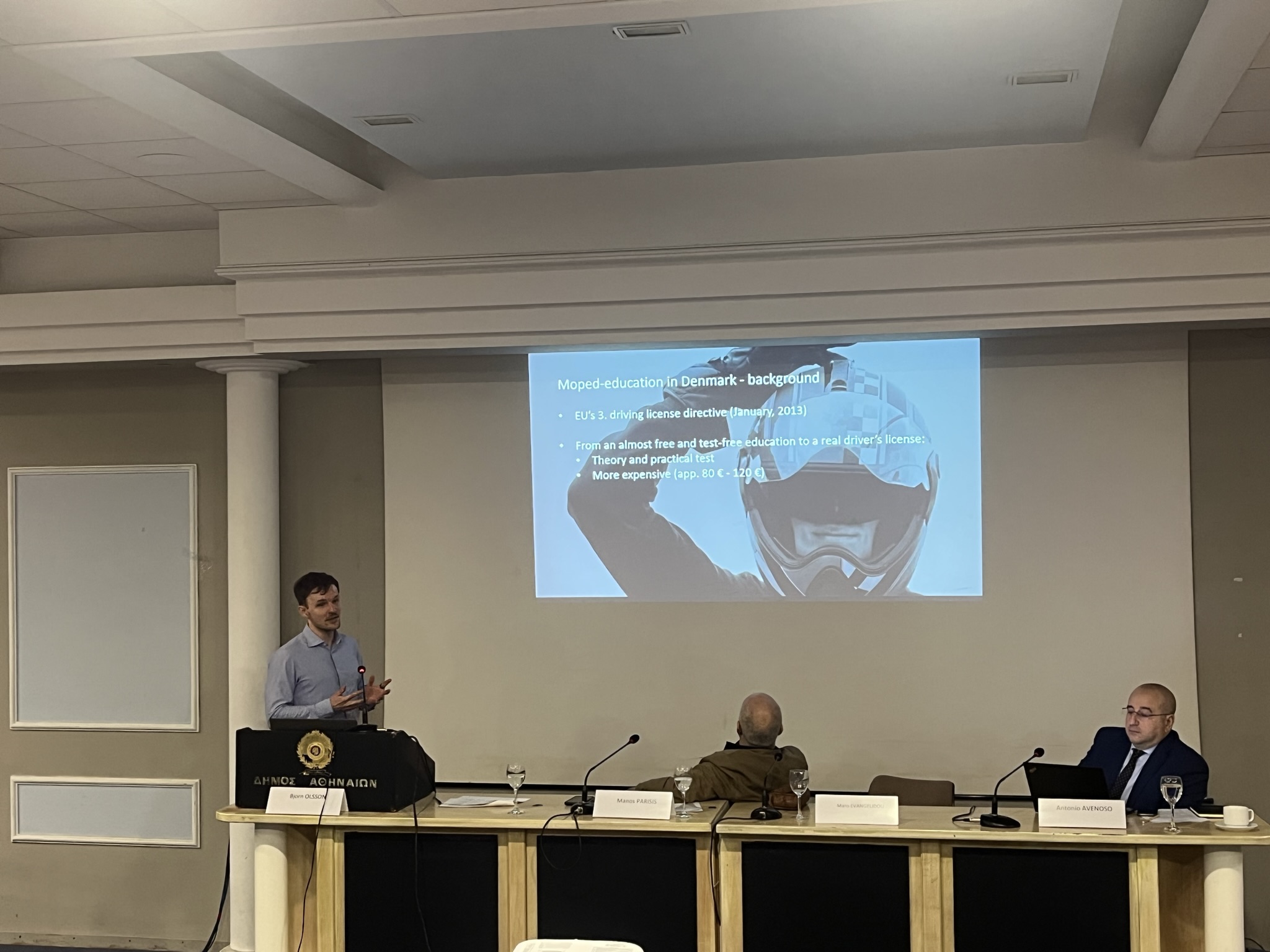
Bjørn Olsson’s presentation focused on the Danish model for training of small mopeds (up to 30km/h) riders. The so-called youth schools are organised and managed locally in the municipality and they are responsible – among many others – for moped education.
He detailed how moped training is conducted, outlining the requirements and testing conditions. Traffic education of the 15-17 year-olds is essential as the moped is the riskiest mode of transportation. Risky behaviour and bad habits on the moped are normally continued when the moped is exchanged with a motorcycle or car, making this early training even more important.
Professor George Yannis from the National Technical University of Athens then gave a presentation on 30 km/h zones, providing scientific evidence of their benefits in city-wide schemes. The cost-benefit analysis of these measures was explained, alongside a review of ongoing developments in various European cities.
Some countries, including Spain, have gone further by committing to 30 km/h zones at the national level. Greece is also looking to implement this measure under the new proposed Traffic Safety Code. Recent calculations suggest that 104 lives could be saved annually in Greece if 30 km/h zones were introduced in all urban areas, while also increasing city liveability and socio-economic benefits.
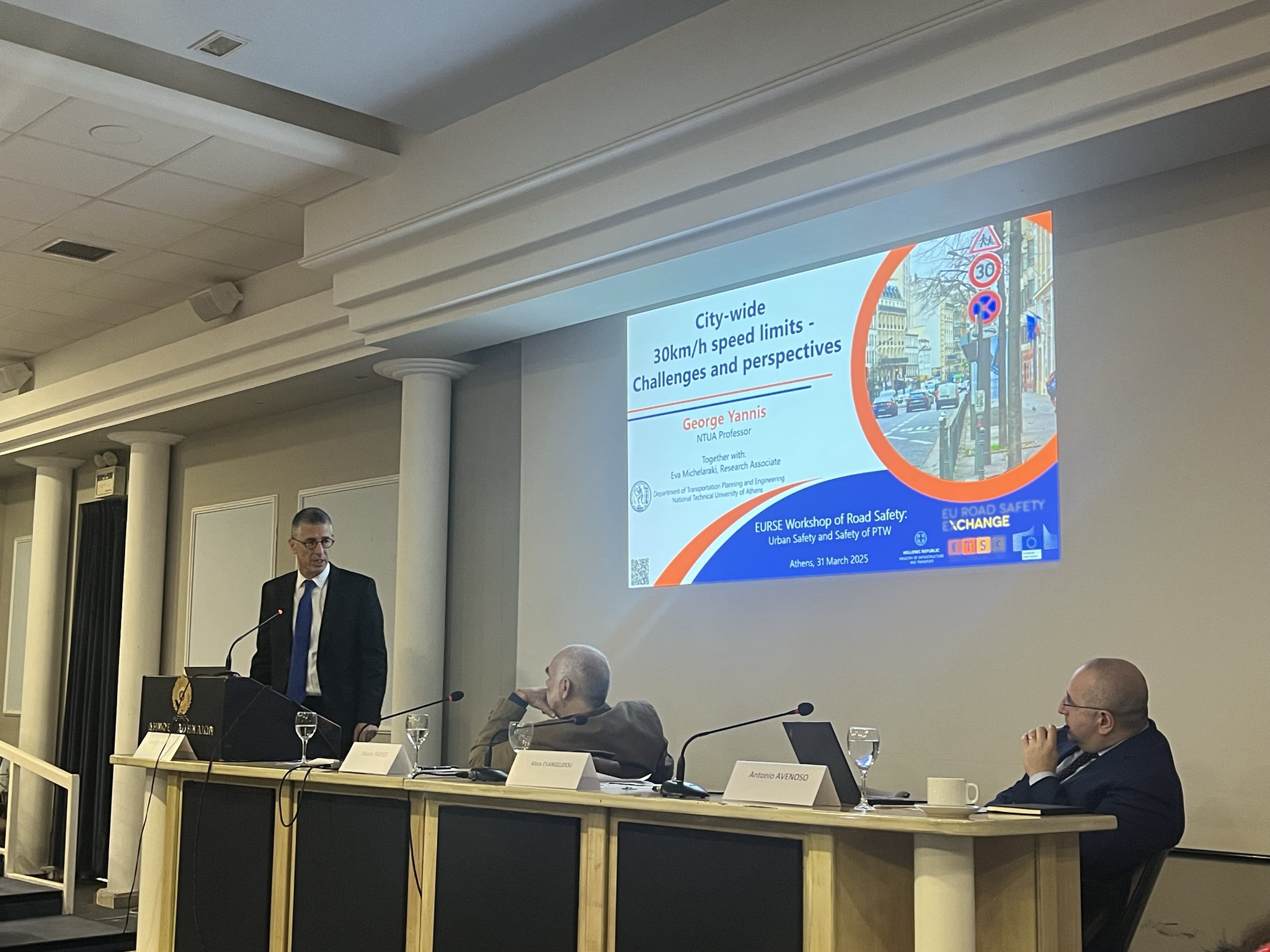
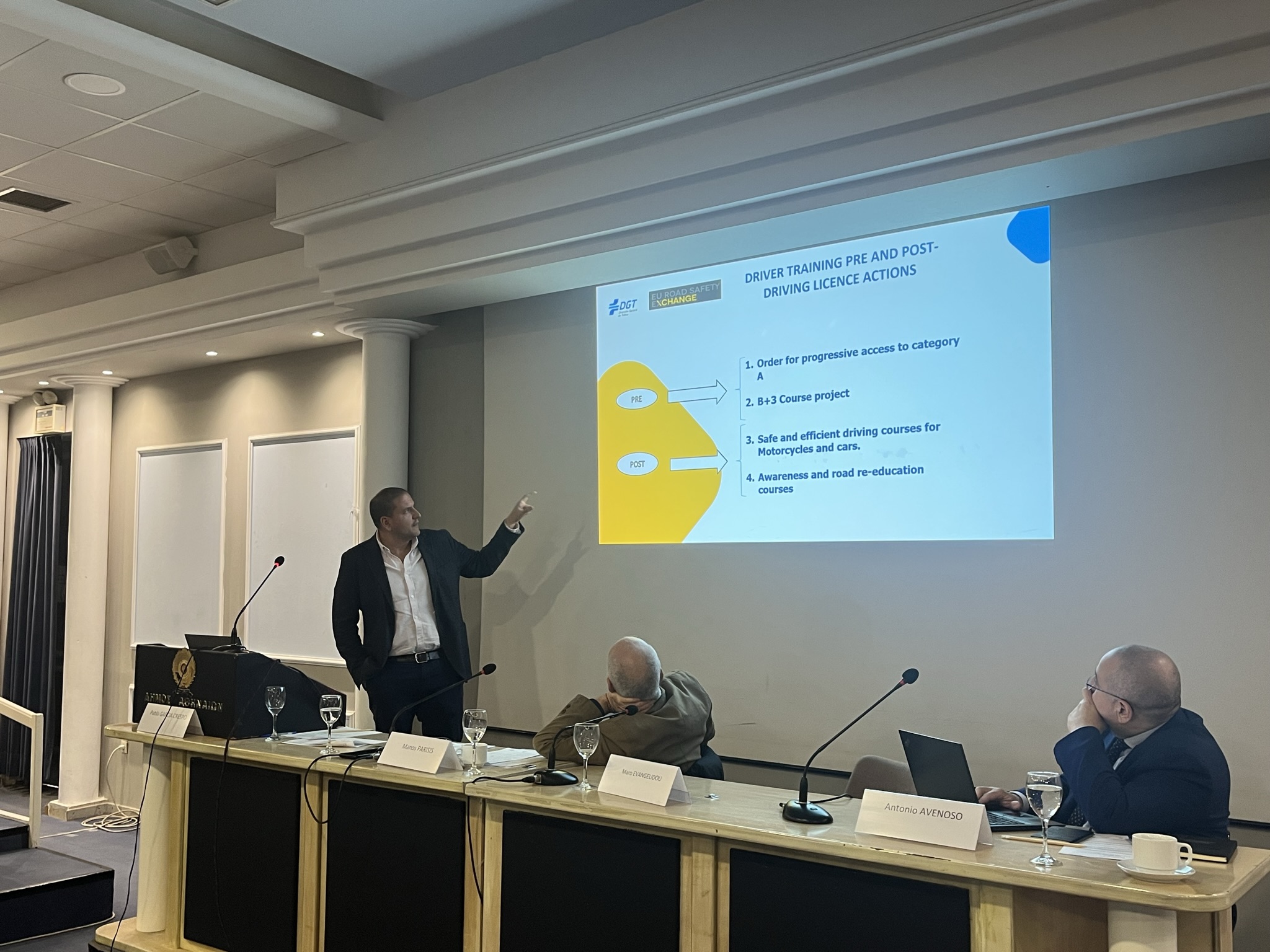
Spain’s DGT expert Pablo García Crespo provided an overview of the rider road safety training framework in Spain, following up on the EURSE study visit to Madrid. He introduced some of the work done to ensure trained and capable riders. Safe and efficient driving courses for motorcycles and cars, developed by DGT, are designed to train drivers in collision prevention techniques and safe riding. While the training is voluntary, participation is incentivised by earning two points on their driving licence by completing the course.
The awareness and re-education courses for those who have committed traffic infractions, have been updated to include compulsory intervention of a road crash victim and increased intervention time of the psychologist-trainer, as well as new programme and new profiles.
Further focusing on powered two-wheelers, Despoina Dimostheniadou from the Ministry of Infrastructure and Transport shared an overview of the statistics on motorcyclists, highlighting common offender characteristics and those most frequently involved in crashes, portraying a road traffic system with an overrepresentation of PTW riders in the total number of road deaths, much above the EU average.
The presentation also provided insights into the usual factors contributing to motorcyclist crashes, including failure to adhere to speed limits and low rates of helmet and protective equipment use – issues discussed and raised by participating experts.
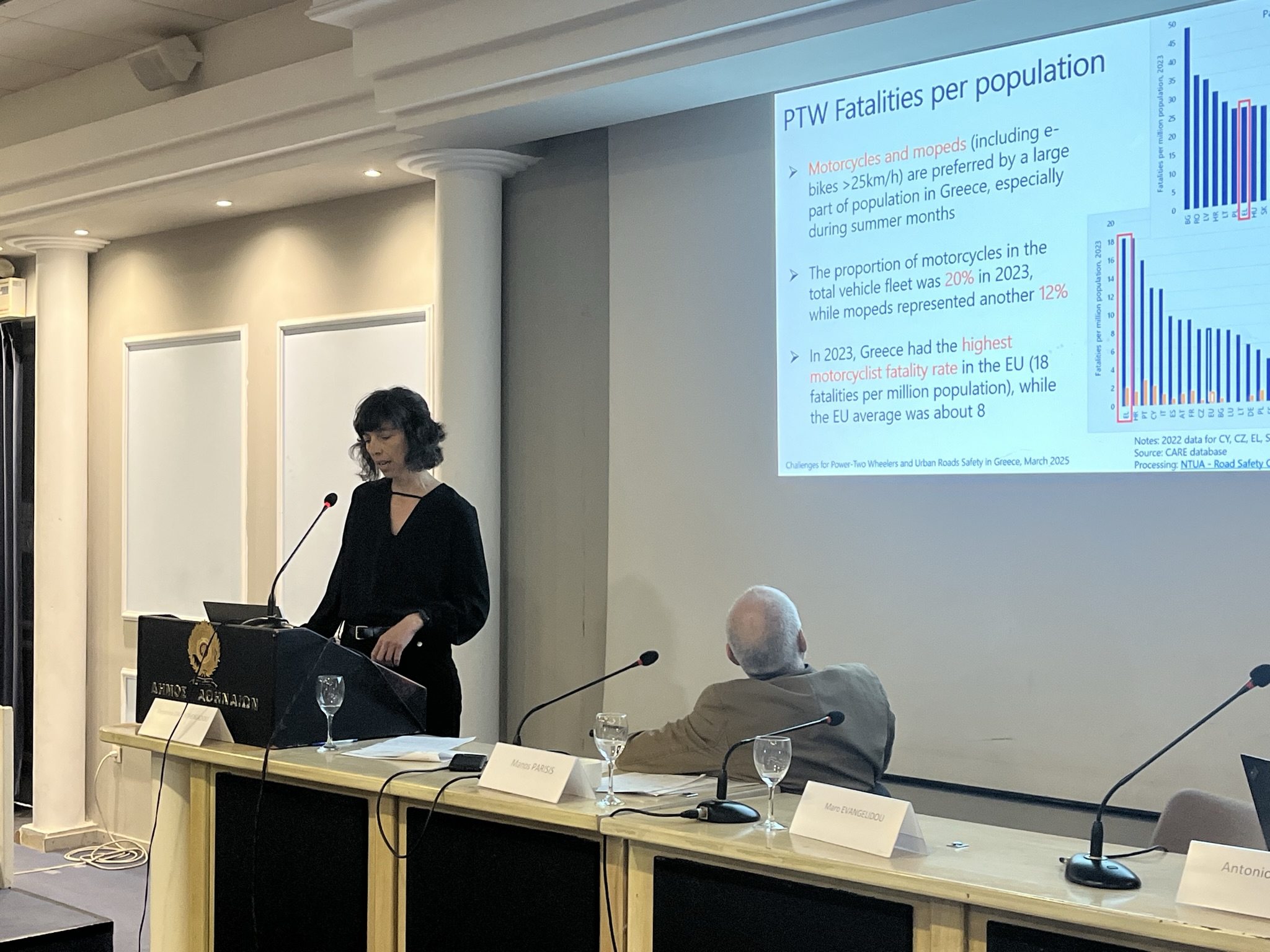
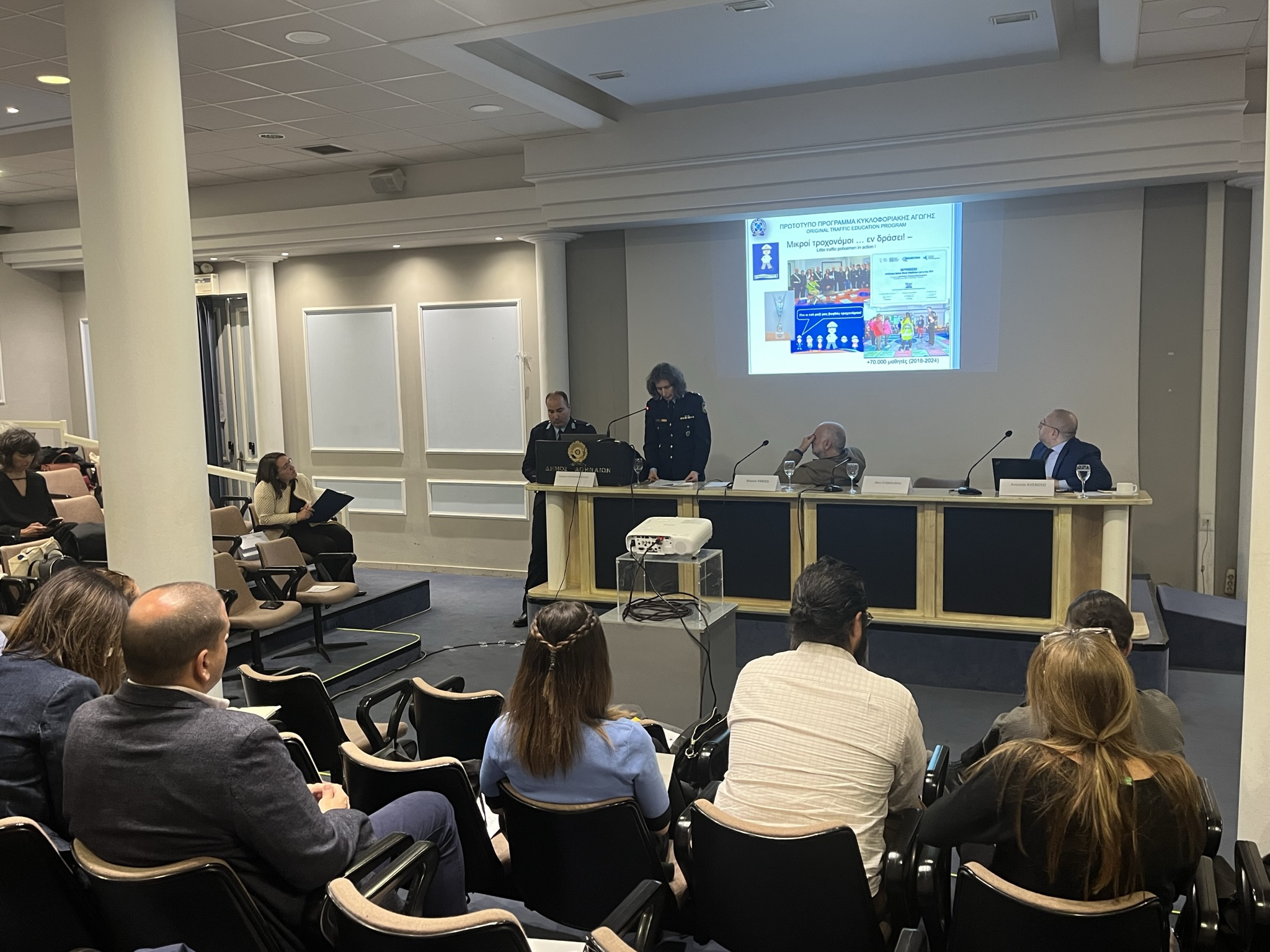
The final presentation was delivered by Paraskevi Papageorgopoulou, Head of Thessaloniki’s Traffic Police Directorate, who provided an overview of the police work on motorcyclist safety, including road safety training and awareness-raising activities. Traffic education programs developed by the police to educate children in the proper use of the roads were shared with the participants, including the successful ‘Little traffic policemen in action’.
Although Greece has one of the highest number of police officers per inhabitant, enforcement of road traffic safety is only one of the many attributions of the police officers.
Experts then had the opportunity to see first-hand some of the measures introduced in the City of Athens for road safety, including public transport developments, safe urban road infrastructure projects, and discussing key mobility challenges in Athens.
The very high number of powered two wheelers and cars, combined with a road infrastructure built in the past to accommodate a much less dense traffic and the space limitations created often traffic jams and unsafe situations. Plans to create pedestrianised roads in the city centre were shared.
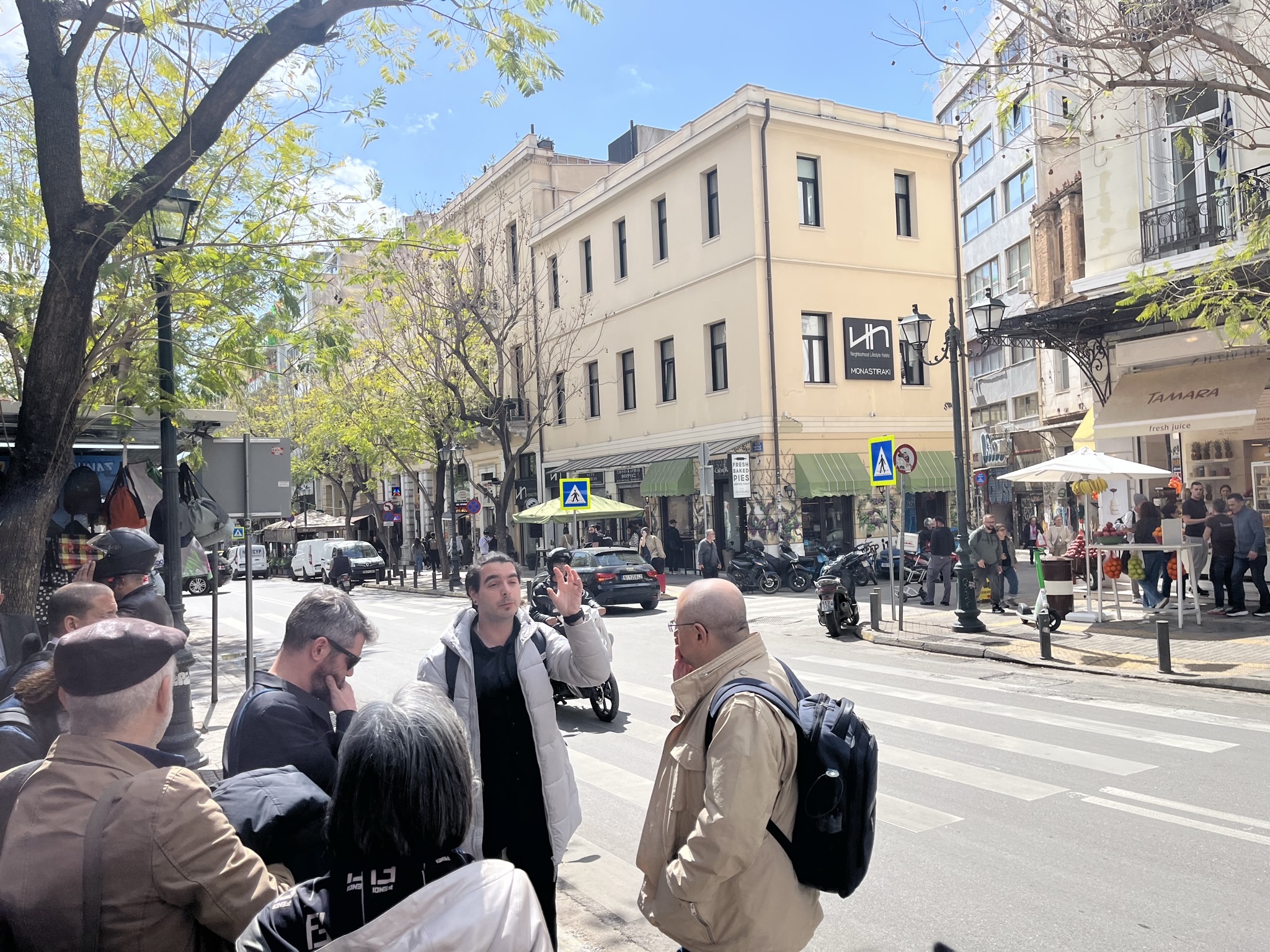
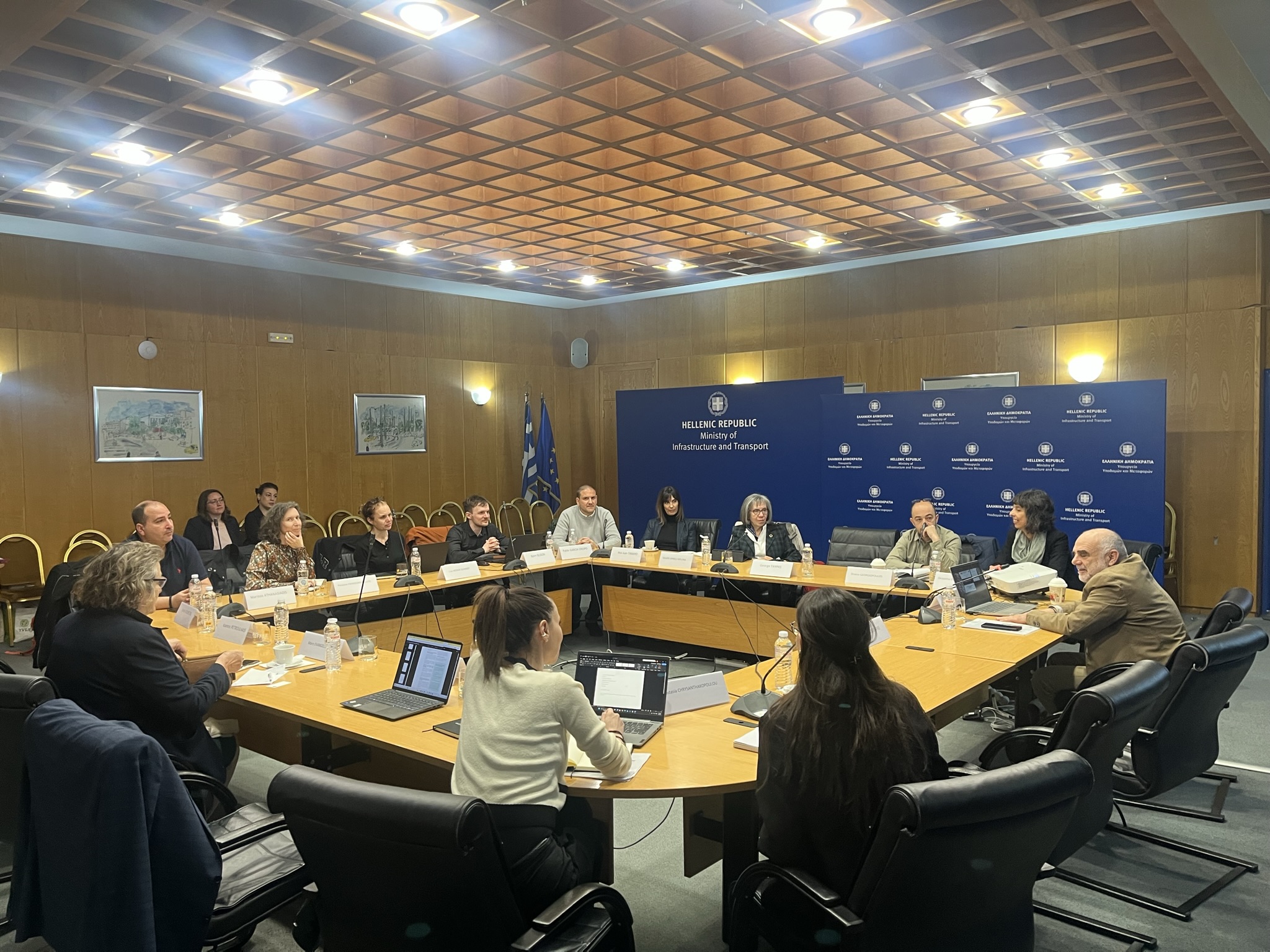
The second day of the workshop took place at the Ministry of Infrastructure and Transport, where participants engaged in discussions on recent road safety developments in Greece and planned measures in the New Traffic Code.
Aris Kotsoumpas from the Secretary General’s Transport Office shared Greece’s commitment to improving road safety, with plans to modernise the sanctioning framework for road traffic offences, establish a national road safety observatory, and create a centre for fines processing.
Participants were then presented with details of the ongoing changes in the New Traffic Code and shared their perspectives and experiences. These changes included reduced speed limits in urban areas, stricter penalties, rationalised according to the risk level of the offence, as well as measures to create conditions for sustainable urban mobility for motorcyclists.
Some of the planned developments, as highlighted, were inspired by previous and current exchanges within the EURSE project – such as the introduction of advanced stop lanes for motorcyclists or parking spaces in front of intersections for PTWs – a practice seen in Madrid and Copenhagen.
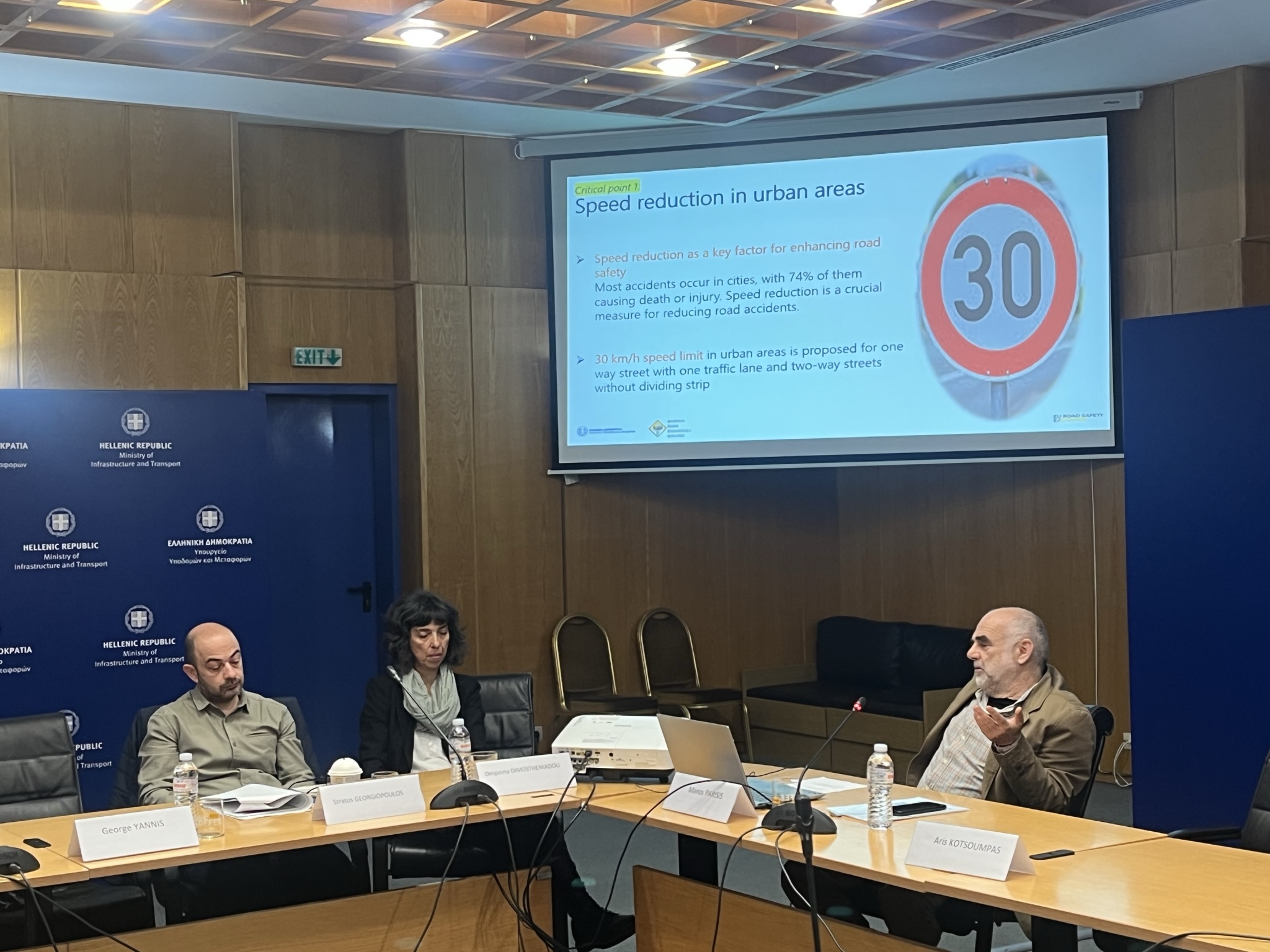
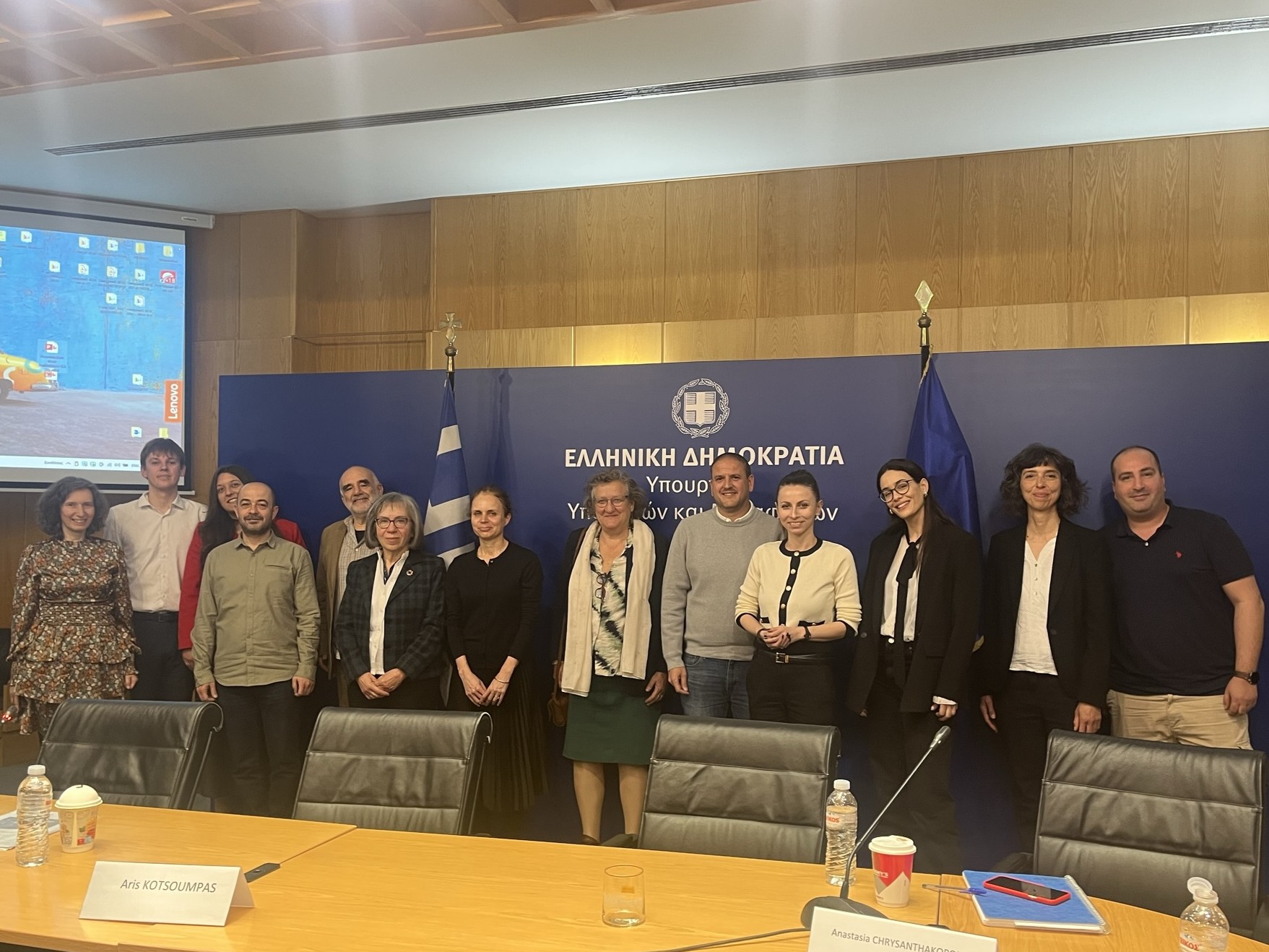
The workshop concluded with a reaffirmation of the successful exchanges and positive expectations regarding the upcoming New Traffic Code in Greece.
Four additional workshops are scheduled throughout 2025, with participating countries continuing to collaborate on key road safety topics identified in the project.